How to TAME Wild Rice!
You’re probably already aware that wild rice is not rice at all, but a grass. It’s an annual aquatic seed Zizania aquatica found mostly in the upper freshwater lakes of Canada, Michigan, Wisconsin, and Minnesota.
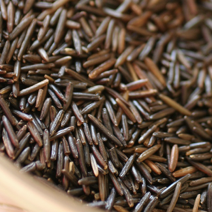
It became known as wild rice because European explorers noticed native American Indians gathering it in the waters of the Great Lakes region. As they observed it rising 3 or 4 feet above the water, it reminded them of rice paddies they’d seen when passing through the Far East.
Cooked wild rice has a rich nutty or smoky flavor, and a texture that is delightfully chewy. The slender, elongated grains you see most often are about one-half inch in length and almost black in color with some touches of green. Premium grades of truly wild, uncultivated wild rice sold in gourmet markets can be as long as one-inch and the colors can vary from medium brown to nearly pure black.
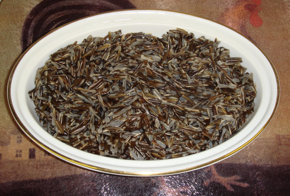
Wild rice towers over other grains when it comes to amounts of protein, minerals, B vitamins, folic acid, and carbohydrates. While the protein content of 1/2 cup of cooked wild rice measures 3.3 grams, that same quantity of long grain brown rice contains only 2 grams. The bonus is that the wild rice, though high in carbohydrates at 17.5 grams, has only 83 calories for 1/2 cup cooked.
And compared to brown rice, wild rice’s niacin, potassium, magnesium, and zinc content is also extraordinary. It also contains small amounts of calcium and iron.
There are a few things you should be aware of before purchasing this “rice.” It’s available in what’s called principal grades and each grade has its own purposes:
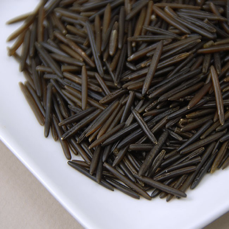
Giant or long grain is the top quality with each unbroken grain measuring at least an inch in length. Its earthy flavor makes it a favorite of chefs who are willing to pay top price.
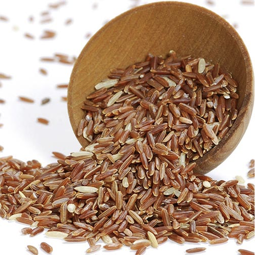
Fancy or medium grain has rice that is unbroken and similarly matched in color and length but not as long as the giant. This grade will cost slightly less than the Giant.
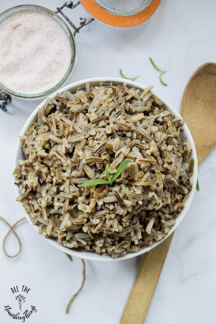
Select or short grain has kernels that aren’t uniform in size or color, and some of the kernels may be broken. This grade is ideal for soups, casseroles, and in combination with brown and white rice.
It will keep indefinitely when stored in a cool dry place in a covered jar. Because of its high moisture level, it may develop mold or maggots if left unrefrigerated. Rice experts recommend storing it in the refrigerator. The jar should be turned upside down occasionally to prevent mildew.
Cooked, leftover wild rice can keep refrigerated up to one week; however, but it’s best to use it up within two or three days. (Note: Any cooked foods stored in the refrigerator for a week can develop molds and yeasts that are not visible to the eye but can negatively affect the immune system.)
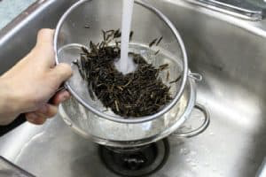
Like true rice, wild rice should be rinsed before cooking to remove any unwanted particles, such as hulls or storage debris. Put the grains into a saucepan with warm water to cover, and stir the rice around to allow any particles to float to the top. Skim off the particles and drain the water. It's best to repeat the rinsing one more time before cooking.
As a general rule, for 3 to 4 cups of cooked wild rice, the proportions are 1 cup of dry wild rice to 3 cups of water, plus 1 teaspoon salt (or to taste). Combine these in a 2 or 3-quart saucepan, cover, and bring to a boil over high heat. Turn heat down to medium low, and steam for 45 minutes to 1 hour.
It can be challenging to prepare because there are variations in the cooking times. Rice gathered naturally has part of its bran layer removed during the hull removal stage and so needs a shorter cooking time. Commercially grown rice that does not have any of the bran layer removed may take an hour or more to cook, while gathered rice may only need 45 minutes. Fully cooked grains shouldn’t be mushy nor should they be crunchy. Aim for a pleasantly chewy texture.
I’ll close with a favorite recipe Aunt Annie introduced me to many years ago. It works with any rice, but you’ll get a special pizazz if you do use wild. It calls for popped wild rice and like popped corn, wild rice will puff slightly when fried in hot oil. The puffed kernels make a unique topping for soup or salad.
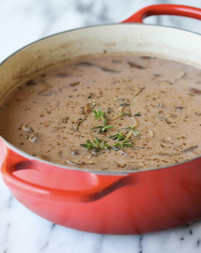
Mushroom Soup with "Popped" Wild Rice
Cook time:
Yield:
Serving size: 4
Calories per serving: 342
1/2 cup uncooked wild rice
1 cup water
1/3 cup butter
1 pound fresh mushrooms sliced
1 small to medium onion chopped
1/4 cup flour
2 cups chicken broth
2 cups milk
1 dash hot hot pepper sauce optional
"Popped" wild rice (See instructions, below)
Directions:
In 4-qt saucepan, melt butter over medium-high heat. Add mushrooms and sauté until tender—about 5 min. Add onion and sauté 1 min. longer. Stir flour into vegetable mixture until blended. Gradually stir in chicken broth until mixed. Cook, stirring constantly, until mixture bubbles and thickens.
Stir in milk and hot pepper sauce if desired. Drain cooked wild rice; add to mushroom soup. Serve topped with “popped” wild rice, if desired.
“POPPED” WILD RICE
In small skillet, heat 1/2 –inch olive over medium heat to at least 390 degrees, or until VERY hot. (If oil is not hot enough, rice will brown rather than puff.) In small metal strainer, place 1 Tbsp uncooked wild rice. Using the strainer as a frying basket, fry rice in hot oil until puffed. Drain on paper towels. Repeat to make as much popped rice as you wish. One Tbsp wild rice should yield ¼ to 1/3 C popped wild rice.
- www.flickr.com
- www.commons.wikimedia.org
- www.northbaytrading.com
- www.gourmetimports.com
- www.allthenourishingthings.com
- www.earthfoodandfire.com
- www.damndelicious.com
 Alice Osborne
Alice Osborne
DVO Newsletter Contributor since 2006
Email the author! alice@dvo.com
